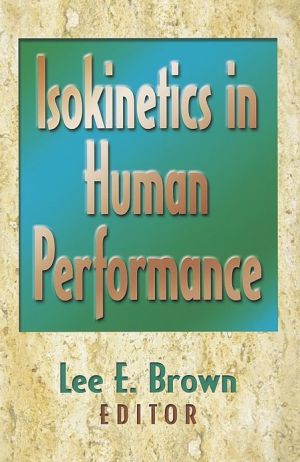

 |

|

The average rating for Isokinetics in human performance based on 2 reviews is 4 stars.
Review # 1 was written on 2015-03-08 00:00:00 Alexa Geistman Alexa GeistmanBack in the heyday of running madness (1970s-1980s), it seemed that everyone I knew was having knee surgery. Of course, you can imagine what that entailed in those days, and I was determined to not have the same issues despite having frail knees and a very healthy running habit (80 miles weekly). This book proved to be a godsend, as it emphasized stretching, which wasn't something anyone really discussed. Long before yoga and pilates, this book offered specific exercises to enhance running production and to decrease pain. It certainly worked. To this day, I still use these stretches. It stays in my collection as a reference book and a reminder of a younger body. Book Season = Year Round |
Review # 2 was written on 2013-10-29 00:00:00 Clifton Mcguffey Clifton McguffeyI remembered this play as being nothing more than a superb melodrama organized around a charismatic, one-dimensional villain, but I now realize it is more complex than that. Richard's deformity is not merely a physical sign of spiritual evil, but also a metaphor for the twisted era of internecine and intra-generational violence of which he himself is the inevitable conclusion. Richard claims that his disability disqualifies him for a peaceful age's love-making, but his effective wooing of Lady Anne--literally over her husband's dead body--belies this claim. No, Richard, who from infancy has known nothing but civil war and betrayal, can only be effective when he is either murdering his Plantagenet relatives or plotting to do so. (Thus, when he finally becomes king, he can neither enjoy the honor nor rise to the challenge, and therefore is soon plagued with nightmares and consigned to destruction.) Richard fancies himself as the medieval Vice, commenting sardonically to the audience on the action he has devised, heedless of the fact that he is also part of a universal moral design. Richard, who embodies in concentrated form the worst deeds of his time, must be purged so that a new age can be established. It is here that the women of the play become important, transforming it into Senecan if not Sophoclean tragedy. In periodic choruses, the queens Margaret, Elizabeth and Anne (plus the Duchess of York) mourn their children and others who have been snatched from them by civil war, and call down vengeance on Richard and other murderers. The interesting thing about this chorus, however, is that it is not composed of unified expressions of grief and vengeance, for the woman continually curse and blame each other, each proclaiming her own sorrow as somehow superior to that of the others. Ironically, the age's long history of crimes against mothers deprives even maternal grief of its unity. I believe this is Shakespeare's first self-conscious attempt to create tragedy--in the classical sense--out of popular drama. The conception of the women's chorus--both a traditional tragic chorus and at the same time something more personal, more ironic--is particularly impressive in this regard. Unfortunately, however, Shakespeare overreached himself. In execution, the chorus of queens is often whiny and wearying, and slows down the action without illuminating it. Nevertheless, it is a great step toward the tragic resonances of the major plays. |
CAN'T FIND WHAT YOU'RE LOOKING FOR? CLICK HERE!!!